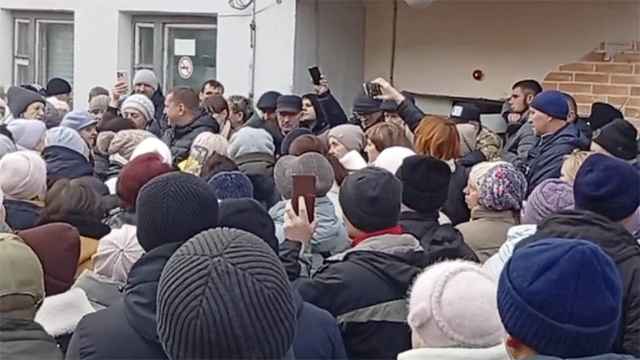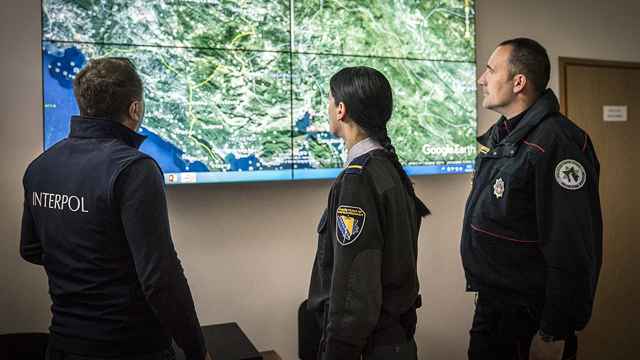At the November NATO summit in Lisbon, Russia and the alliance set June as a deadline to make progress in developing a framework for cooperating on missile defense. If an agreement is reached, it could become a game-changer in Russia’s relations with the United States and its NATO allies. We are at the halfway point toward that deadline, but the two sides are yet to demonstrate significant progress on the issue.
U.S. Defense Secretary Robert Gates has become the latest among Western officials to try to assure Moscow that their planned missile defense systems will neither target Russian nuclear strategic forces nor be capable of intercepting sophisticated Russian intercontinental ballistic missiles, and that it is intended to counter missile threats from Iran. But after his March 22 meeting with Defense Minister Anatoly Serdyukov, the only thing Gates could say was that Washington and Moscow remain divided over the issue.
Serdyukov and other Russian officials continue to maintain they are not convinced by the U.S. arguments and insist there should be a formal agreement that would ensure U.S. and NATO missile defense do not target Russian strategic nuclear forces. Moscow doesn’t agree that Iran’s missiles are or could be a threat and insists that there should be a joint Russia-NATO missile defense system rather than two separate ones, as Washington and Brussels insist.
There is, however, a way out of this stalemate.
First, NATO and Russia should build a consensus on missile threats. If based on facts, these assessments should conclude that Iran’s program will produce missiles capable of reaching targets not only in Europe, but also in United States and much of Russia in the foreseeable future.
Then, based on this consensus, Russia and NATO should conclude a founding act on missile defense cooperation. Using language from the 1997 founding act on NATO-Russian relations, this new document should declare that “the member states of NATO have no intention, no plan and no reason to deploy missile defense installations that would target or intercept delivery vehicles of Russian strategic nuclear forces.”
The 1997 act stated that NATO member states have “no reason to deploy nuclear weapons on the territory of new members.” While the United States and its allies disagreed with Russia on whether that act contained legally binding bans and whether it required ratification, Washington still kept its promise to avoid deploying nuclear weapons in new member states. Similarly, an act on missile defense cooperation that would contain a promise not to target Russian nuclear forces should be sufficient to reduce Russia’s concerns while at the same time prevent opponents in the West from derailing it since such an act would not require ratification.
The act would establish two separate systems and institutionalize the continuous sharing of information on threats collected by radars and other means. It would also facilitate the interoperability of NATO’s and Russia’s systems.
As part of this act, the administration of U.S. President Barack Obama should agree to exchange information on missile defense technologies, even including data on propulsion systems of interceptors to ensure greater transparency. The White House can also consider reviving a 2007 proposal to restrict radar angles and abstain from the deployment of mid-course interceptors in northeastern Europe.
For its part, Russia should avoid imposing false red lines. Even if deployment of U.S. SM-3 Block IIBs — the fourth and most-advanced phase of Obama’s missile defense program for Europe — is completed by 2020, several dozens of these interceptors will not be able to undermine the capability of Russia’s strategic nuclear forces. Even Yury Solomonov, the country’s lead designer of ballistic missiles, admits that the currently planned configuration of U.S. missile defense in Europe is not a threat to Russia’s strategic forces.
There are well-grounded reservations about effectiveness of missile defenses, but institutionalized and substantive cooperation in this field would help to transform the NATO-Russian relationship from one rooted in Cold War concepts of nuclear deterrence to a substantive defense and security partnership. This partnership would meet both NATO’s and Russia’s long-term interests of combating common security threats, which include not only emerging missile threats, but also the proliferation of weapons of mass destruction, nuclear terrorism and failed states and the threat they pose to regional and global security.
Simon Saradzhyan is a research fellow at Harvard University’s Belfer Center.
A Message from The Moscow Times:
Dear readers,
We are facing unprecedented challenges. Russia's Prosecutor General's Office has designated The Moscow Times as an "undesirable" organization, criminalizing our work and putting our staff at risk of prosecution. This follows our earlier unjust labeling as a "foreign agent."
These actions are direct attempts to silence independent journalism in Russia. The authorities claim our work "discredits the decisions of the Russian leadership." We see things differently: we strive to provide accurate, unbiased reporting on Russia.
We, the journalists of The Moscow Times, refuse to be silenced. But to continue our work, we need your help.
Your support, no matter how small, makes a world of difference. If you can, please support us monthly starting from just $2. It's quick to set up, and every contribution makes a significant impact.
By supporting The Moscow Times, you're defending open, independent journalism in the face of repression. Thank you for standing with us.
Remind me later.







